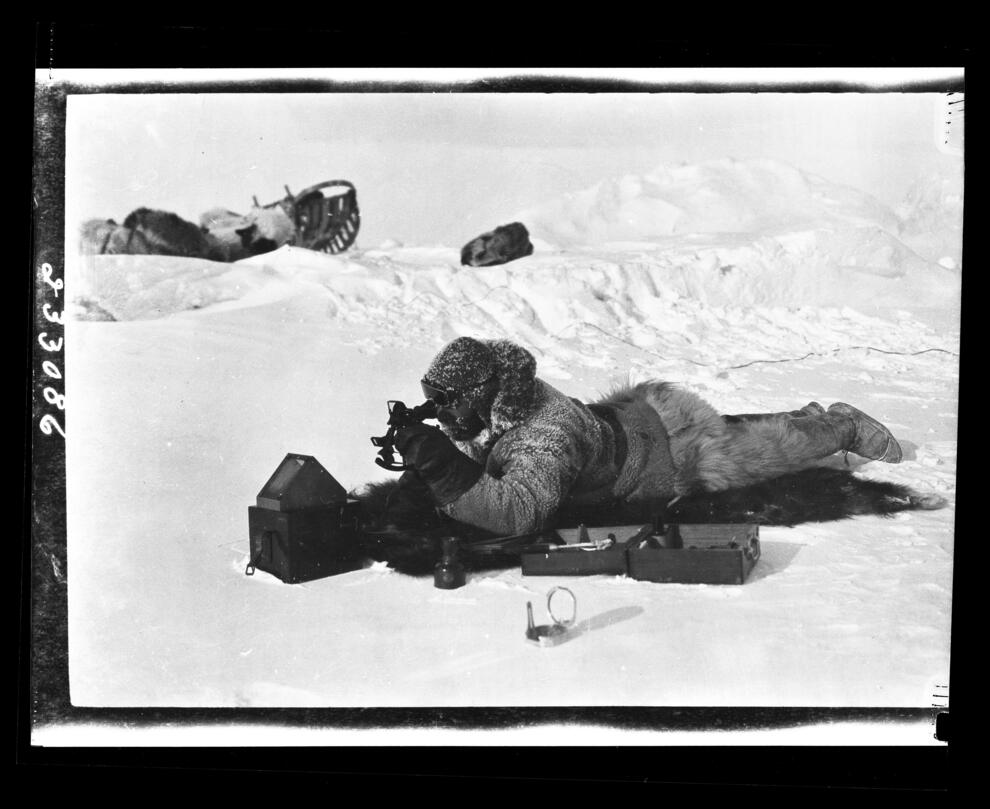The internet has allowed much of the working world to stay connected during the "pause” and the Library is no exception. While keeping in-progress projects moving ahead, the Library staff has made significant strides in turning its attention to priorities that could be addressed remotely. What an opportunity - suddenly there was time to tackle some of that lingering, back burner work. My colleagues across the Library will describe some of those projects in subsequent posts.
In between Zoom and Teams meetings and the email correspondence that has somehow continued unabated, I’ve been proceeding with an effort to transcribe some of the digitized field notebooks of Edmund Otis Hovey, geology curator and leader of the 1915 relief effort for the Crocker Land Expedition. The Crocker Land Expedition proper was exploring the arctic in search of Crocker Land, a landmass whose existence was ultimately debunked. Much like the modern world of Spring 2020, the relief ship George B. Cluett and its crew, on its way to northern Greenland to relieve the Expedition proper, found itself iced-in in the fall of 1915, was forced to wait out the winter in isolation. The relief expedition ended up requiring its own relief ship and when it failed to arrive, Hovey spent a second winter in Greenland.
The Crocker Land Expedition journals and the records of other field trips were cataloged with the support of the Leon Levy Foundation. This allowed these handwritten journals to be digitized and made accessible online as part of the 2018 collaborative Council on Library and Information Resources (CLIR)-funded Biodiversity Heritage Library Field Notes Project, but handwritten notes are not searchable. Fortunately Hovey’s hand is clear and the crew’s period of sheltering in place is fascinating, thanks to Hovey’s descriptions of the local geology and weather, interactions with native Greenlanders, atmospheric optical phenomenon (see paraselenae!) and detailed reviews of the cook’s rationed meals, including seal and polar bear (often overdone to Hovey’s taste).
Photographer unknown
Transcription work is slow going, but this endeavor will allow greater access to these journals in the future. In a strange way, I’m relating to their plight of not knowing when they’ll be free to get on with their life and work. Hovey sets a remarkably upbeat and positive example with his daily regimen, refining his writings on his notes from his field research on Martinique volcanism, planning for an exhibit documenting his research on the same, and making sure he gets in a long walk each day, as the weather permits, a schedule he’s inspired me to follow. Luckily, on my daily hikes I don’t have to keep an eye out for polar bears.
Hovey's journal, and other Crockerland Expedition field journals, were conserved thanks to the generous support of Patricia E. Saigo, MD.
Photographer unknown
This is the first post in a series about how the Library's staff is working remotely and enriching its digital collections to enhance access to researchers and the public during the Covid-19 pandemic. This entry was written by Tom Baione, Harold Boeschenstein Director, Library and Archives.
